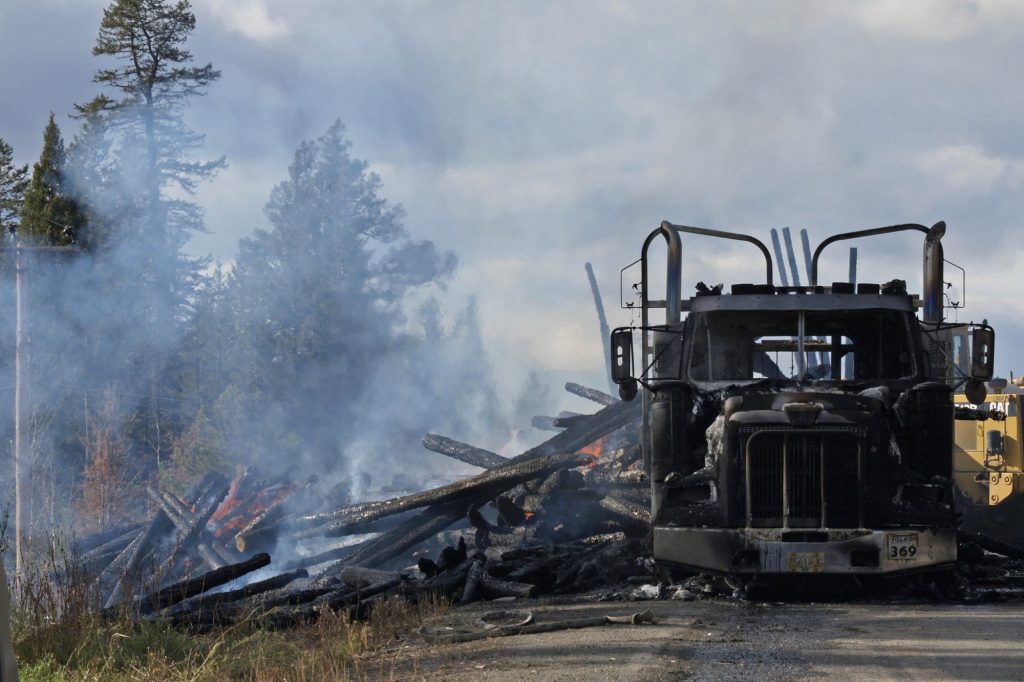A Complete Guide on How to Navigate a Log Truck Accident
Were you involved in a log truck accident? If so, you need to take certain steps to cover yourself legally, such as seeing a doctor and gathering evidence. An insurance policy for log trucks will protect drivers and provide compensation to victims.
This article will explain what to do after a log truck accident in greater detail. Let’s explore.
Seek Medical Attention
If you sustained injuries, you should see a doctor immediately. Even if you have minor injuries, you should see a medical professional. Log truck accidents can cause major injuries.
You could have underlying injuries that may not manifest until days or weeks later. Also, documenting your injuries will be vital throughout the insurance process.
Insurance companies need as much information as possible when it comes to personal injuries. Medical reports and medical bills are key pieces of evidence you’ll need to obtain sufficient payouts. Without medical documentation, you’ll have a harder time proving your claim.
Talk to the Police
You must talk to the police about the accident. Convey your side of the story in detail. Insurance companies use police reports throughout the investigative process. When the police arrive, you should keep the following in mind:
- Get the name and ID number of the police officer
- Request a copy of the police report after the accident
Getting the police officer’s name will be crucial as you document your experience. After the accident, you should write down as many details as possible while your memory is fresh.
Over time, you may forget small details that could help your case. Therefore, note as much detail as possible, including the name of the responding officers.
You should also read the police report because it may not be accurate. Police reports may contain errors that you must correct. You should correct the record as soon as possible to preserve the integrity of your case.
A report that contains inaccuracies can delay your case, or those errors may result in a case dismissal.
- Note: Always leave a paper trail when it comes to insurance or legal cases. If possible, maintain communication via email, text, or letter. Paper trails are great pieces of physical evidence, and they will prevent miscommunications.
If you notice errors in the report, write to your local police station. Be polite when requesting an alteration of the report. From there, the police should issue the corrections without hassle.
Document the Scene
If possible, take as many photos or videos of the scene as possible. Imagery will help insurance reps obtain a clear picture of the accident.
Further, take photos of any property damage. Also, images can refute any claims from at-fault parties during insurance negotiations or legal cases.
Find Witnesses
Witnesses are vital assets during insurance investigations or civil lawsuits. Witnesses can be other motorists or pedestrians. Regardless, try to find people who can corroborate your story. If they give permission, record the conversation with them. Then, collect their contact information.
Proving Negligence
If you’re the victim, you must prove that the other party’s negligent behavior caused the accident. Under the law, motorists must preserve the wellbeing of fellow motorists.
Otherwise known as the duty to care laws, motorists must take such measures as obeying traffic laws or ensuring their vehicles operate safely. If negligence is at play, you must make a direct correlation between the negligence and any personal injuries or property damage.
Admitting Fault
Even if you’re the guilty party, you should never admit fault after an accident. Admitting fault at the scene will force you or your insurance company to cover the damages. Moreover, never admit fault when talking to the police.
Admitting fault in a police report will work against you. That said, never lie to the police. Simply put, convey your side of the story without incriminating yourself.
Above all, don’t admit fault no matter how much the other side tries to pressure you. Without a fault admission, the other side must go through the hardship of proving the negligence. You can also hire an attorney to defend yourself.
File an Insurance Claim
After you’ve gathered all the necessary evidence, you’re ready to file your claim. If you’re a log truck driver, you should have a policy for logging truck accidents.
You should gather as much evidence as possible before filing a claim. State law gives you some additional time to file a claim.
In most cases, you have two years to file a personal injury and/or property damage claim. However, you shouldn’t take too long for the following reasons:
- Failing to file within the appropriate timeline will give you no recourse in terms of compensation.
- The other side may raise questions as to why you choose to file so late.
- You stand the risk of losing evidence or failing to recall vital details that would have helped your case. Plus, you could lose important witnesses.
Contact your insurance company and notify your intention to file a claim. From there, they will guide you accordingly. Insurance companies will cover property damage, including medical expenses that you incurred after the ordeal.
Protecting Yourself After a Log Truck Accident
After a log truck accident, you should see a doctor, talk to the police, gather evidence, and submit an insurance claim. If the other side is negligent, you need as much physical proof as possible to win a claim. Also, never admit fault after the accident if you were the at-fault party, as it could place you in a precarious position legally.
Interested in reading more? Read more on our blog to gain insight into other topics.

